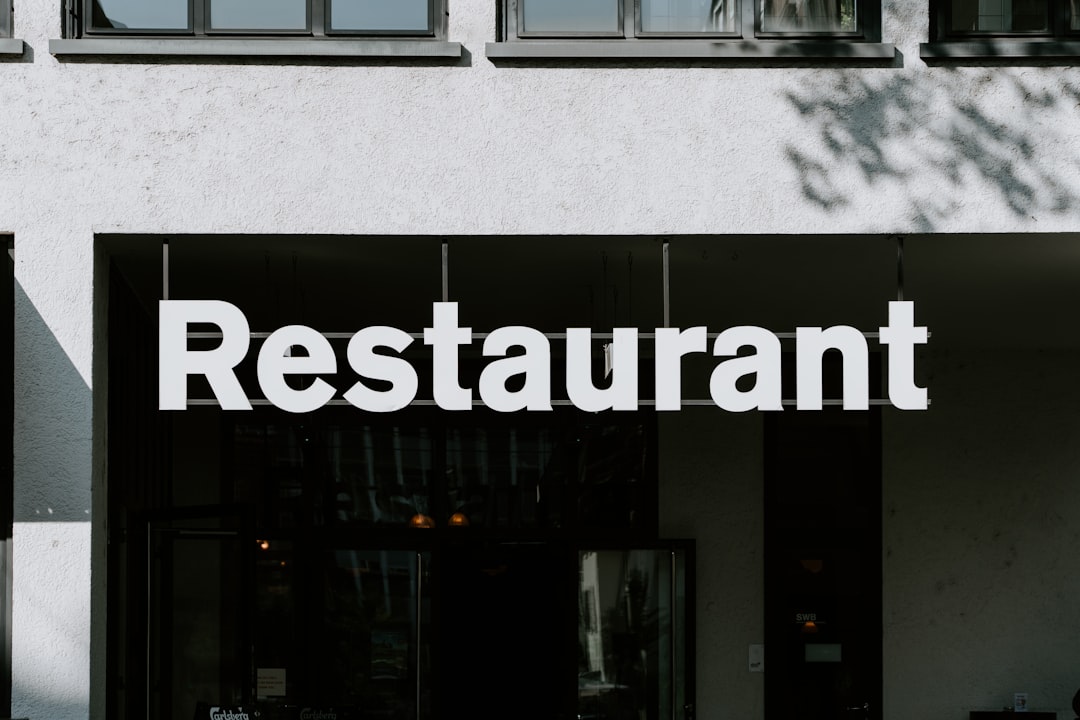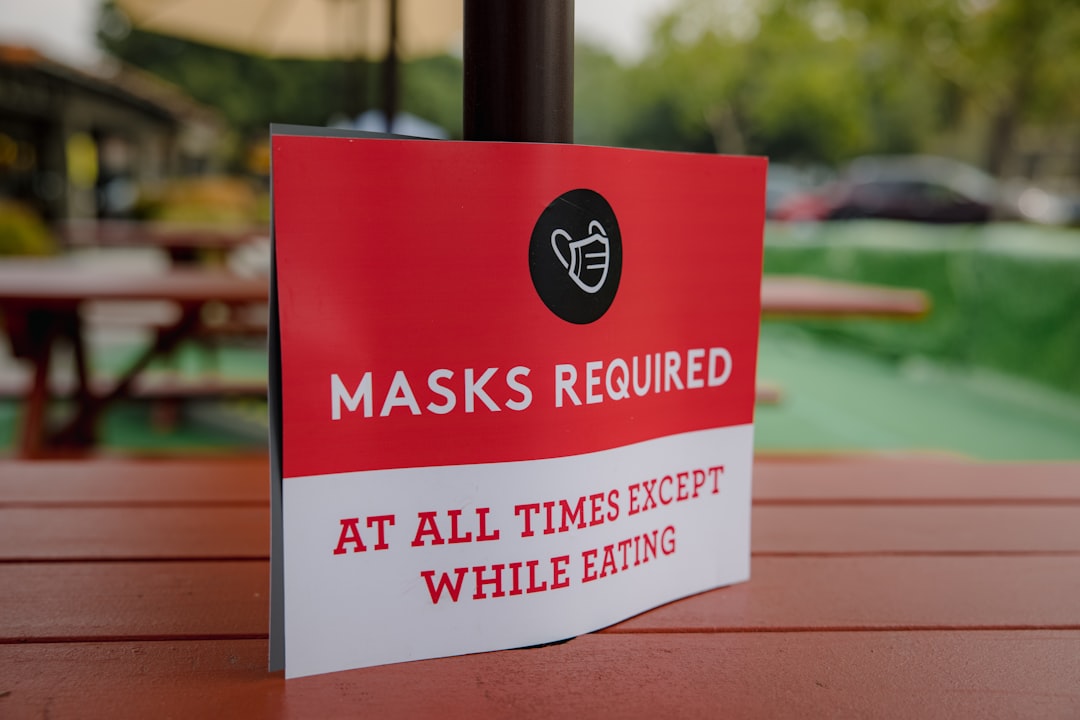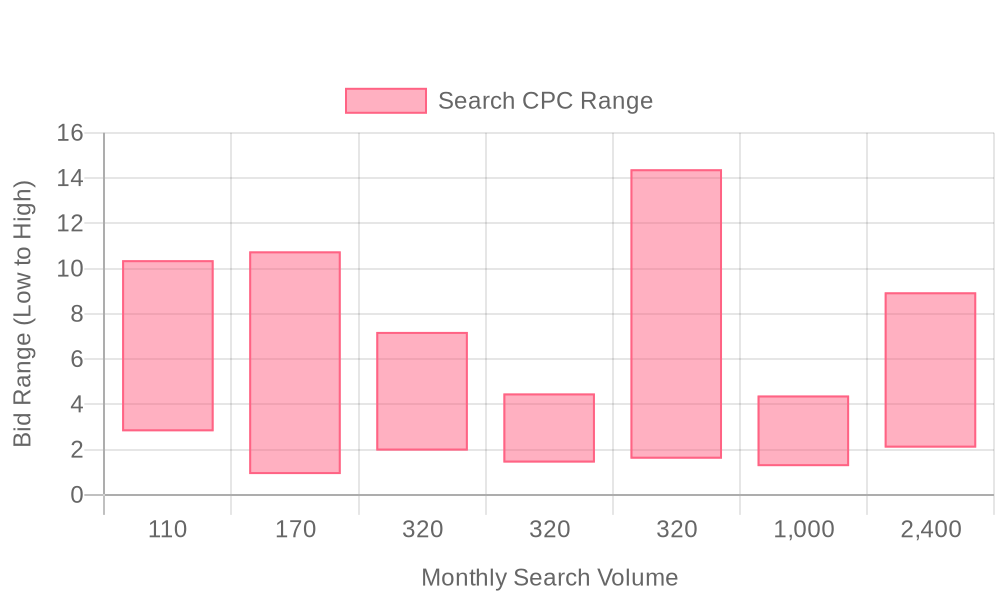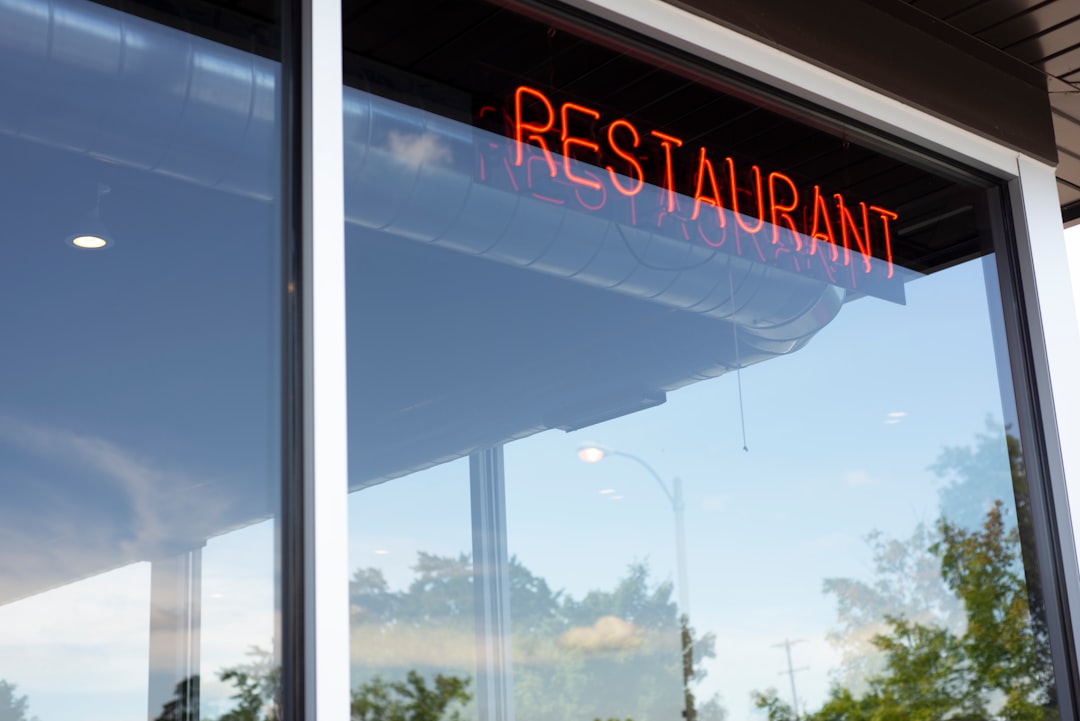
Supercharge your lead generation with a FREE Google Ads audit - no strings attached! See how you can generate more and higher quality leads
Get My Free Google Ads AuditFree consultation

No commitment
Supercharge your lead generation with a FREE LinkedIn Ads audit - no strings attached! See how you can generate more and higher quality leads
Get My Free Google Ads AuditFree consultation

No commitment
Supercharge your lead generation with a FREE Meta Ads audit - no strings attached! See how you can generate more and higher quality leads
Get My Free Google Ads AuditGet My Free LinkedIn Ads AuditGet My Free Meta Ads AuditFree consultation

No commitment
Supercharge your lead generation with a FREE Google Ads audit - no strings attached! See how you can generate more and higher quality leads
Get My Free Google Ads AuditFree consultation

No commitment
In today's fast-paced food and beverage landscape, businesses face the challenge of missing high-value prospects due to inadequate tracking systems, resulting in lost opportunities and unrealized growth. A sophisticated blend of digital and traditional marketing is crucial to stand out, and Google Ads emerges as a pivotal tool for capturing high-intent searchers at just the right moment. By utilizing modern solutions, food delivery services can intercept local customers searching for 'food delivery near me' and drive high-impact promotions to convert search interest into sales. This integration not only enhances precision but allows for detailed tracking and measurement, effectively linking online efforts with tangible offline outcomes.

Food and beverage marketers face unique challenges in capturing high-intent leads before competitors do. Precision targeting and data unification are essential to scale campaigns efficiently, convert anonymous visitors, and drive measurable growth. For marketers aiming to turn website visits into actionable pipeline, Sona Identification enables you to reveal which companies and people are engaging—even if they don’t fill out a form.
This guide outlines a proven framework for leveraging Google Ads to generate quality leads in food and beverage services. The approach incorporates advanced keyword strategies, audience segmentation, optimized landing experiences, and real-time performance insights for maximum impact. For more in-depth marketing tactics, browse our blog resources on demand generation and attribution.
This strategic framework equips food and beverage marketers with actionable steps to drive qualified leads, unify fragmented data, and achieve consistent results with Google Ads for Food and Beverage Services. If you’re ready to elevate your lead generation, get started for free with Sona and see how unified data activation transforms campaign performance.

Food and beverage brands face unique pressure to convert online visibility into direct, measurable revenue. While general awareness campaigns build recognition, modern marketers need precise channels that capture intent and drive action at key decision moments. With accurate visitor identification, marketers can pinpoint not just anonymous clicks but also the companies and individuals showing purchase intent, resulting in fewer missed opportunities and higher ROI. Explore more expert tips and strategies on our marketing blog.

Food and beverage businesses face intense competition for customer attention, requiring tailored advertising strategies that connect with diners and buyers at the right moment. A well-structured Google Ads approach ensures brands appear in front of active searchers, reinforce brand recall, and capture demand across multiple digital touchpoints. For ongoing campaign optimization and the latest marketing insights, explore our marketing blog.
Ready to see how advanced campaign strategies can drive results for your business? Get started for free with Sona.

| Industry | Keyword | Monthly Search Volume | Competition Level | Low Bid | High Bid |
| Food and Beverage Services | food and beverage consulting companies | 110 | LOW | 2.81 | 10.37 |
| Food and Beverage Services | commercial beverage cart | 170 | HIGH | 0.92 | 10.76 |
| Food and Beverage Services | food and beverage services | 320 | LOW | 1.96 | 7.2 |
| Food and Beverage Services | drink catering | 320 | LOW | 1.43 | 4.48 |
| Food and Beverage Services | food and beverage staffing agency | 320 | LOW | 1.6 | 14.39 |
| Food and Beverage Services | hot chocolate catering | 1000 | LOW | 1.27 | 4.39 |
| Food and Beverage Services | food and beverage consulting | 2400 | LOW | 2.09 | 8.95 |
Effective keyword strategy is foundational for high-performing Google Ads for Food and Beverage Services. Modern marketing teams must align their campaigns with the intent and urgency of their audience, leveraging real search behavior to capture demand at the right moment. For a deeper dive on keyword segmentation and real-world campaign optimization, explore our expert articles and insights.
By structuring keyword lists around these segments, food and beverage marketers can optimize campaign performance and unlock higher conversion rates. Dynamic keyword and audience segmentation ensures that as users display in-market signals, campaigns can rapidly pivot to prioritize high-intent opportunities. When audience data and keyword targeting are unified, teams can move beyond basic demographic targeting to pinpoint actual prospects, personalize messaging, and allocate budget where it drives the greatest impact. For example, as dynamic audiences update in real time, marketers can seamlessly push enriched segments into Google Ads, ensuring the freshest, highest-quality leads are always pursued. This approach reduces wasted spend and accelerates pipeline velocity for revenue teams in the food and beverage sector. Ready to put this strategy into practice? Get started for free with Sona.

Modern food and beverage service brands require more than generic digital ads. The most successful teams blend precise targeting, data-driven messaging, and seamless measurement to capture high-value leads and accelerate pipeline velocity. Optimizing each campaign element leads to greater efficiency, stronger ROI, and the ability to scale consistently. For additional insights on maximizing marketing impact, explore expert articles and insights on campaign strategy.
For B2B revenue teams, unified go-to-market data is essential. Campaigns that sync across channels and sales systems unlock better attribution, faster feedback loops, and deeper insight into customer intent. The following execution framework details each step to maximize impact in Google Ads for Food and Beverage Services. Get started for free with Sona to unify and activate your campaign data seamlessly.
Leveraging visitor identification enables marketers to pinpoint which companies and buyers are searching for specific food and beverage services, rather than settling for anonymous clicks. By prioritizing spend on keywords driving engagement from in-market accounts and adapting lists as prospects move through the funnel, you can make your campaigns significantly more effective. For industry benchmarks and comparison, see Google Ads ROAS benchmarks for food and beverage.
By tapping into real-time intent signals, teams can adjust ad messaging to match current buyer priorities and behaviors. Unified audience management ensures prospects see the right message at the right stage, increasing conversion rates and accelerating deal cycles. For campaign compliance, review Google's advertising policies for food and beverage ads.
Integrating enriched account and contact data allows for personalized landing experiences, such as greeting users by company or role or surfacing relevant case studies. Syncing this data with CRM and marketing platforms ensures every inbound lead is attributed correctly and routed for timely follow-up. For actionable strategies, read about using Google Ads to increase restaurant visibility.
When campaign data, CRM activity, and offline conversions are unified within a single source of truth, optimization becomes continuous. Dynamic audiences update as leads move through the pipeline, and attribution models reflect both digital and real-world engagements. For CPM benchmarks and budget planning, explore Google Ads CPM benchmarks for food and beverage subscription businesses.

Food and beverage brands gain a measurable advantage by targeting secondary keywords like "Google Ads for beverage startups" alongside primary campaign terms. This strategy not only broadens reach but also reduces cost-per-click pressure from competing advertisers in high-intent spaces. For current CPM and ROAS expectations, marketers can reference Google Ads benchmarks for food and beverage to optimize bidding and identify untapped demand.
Audience insights serve as a critical lever for finding new revenue within your existing customer base. Proactive marketers analyze customer segments to surface cross-sell opportunities, tailoring messaging to encourage upsells or additional purchases. This approach enables teams to address churn risks early by leveraging intent signals and behavioral data to power timely offers that keep customers engaged.
Localization remains essential for connecting with audiences at the community level. Campaigns that align with local events, holidays, or regional promotions consistently outperform generic messaging, delivering a sense of timely relevance. For more strategies on local campaign success, explore these restaurant Google Ads tips or review expert marketing insights tailored to food and beverage growth.
Integrating insights from search data into broader marketing efforts ensures strategies stay agile and data-driven. By evaluating search trends, performance metrics, and keyword shifts, food and beverage teams can quickly adapt creative assets, landing pages, and product offers to evolving consumer preferences. Platforms with unified data and real-time feedback help streamline this process, transforming granular search data into actionable, omni-channel marketing decisions. Ready to elevate your analytics? Get started for free with Sona.
Maximizing results in Google Ads for Food and Beverage Services hinges on a strategic blend of precise targeting, agile audience segmentation, and real-time data-driven optimization. Revenue teams that integrate these pillars effectively position themselves to capture and convert high-intent prospects, even amidst fierce competition and rapid shifts in consumer behavior.
Harnessing Google Ads for your food and beverage services offers unique opportunities to connect with high-intent prospects, transforming industry challenges into avenues for growth. By leveraging strategic insights and aligning your campaigns with broader marketing efforts, you can capture leads effectively and drive sustainable expansion. If you're ready to see the impact of seamless integrations and real-time data on your ad campaigns, get started for free with Sona.
Effectively utilizing Google Ads for your food and beverage business can be the key to unlocking increased visibility and attracting a broader customer base. By understanding how to target the right audience, create compelling ads, and optimize your campaigns, you can significantly boost your brand's presence in a competitive market.
Throughout this article, we've discussed the common challenges faced by food and beverage services in digital advertising, including identifying target demographics and crafting ads that capture attention. We've outlined strategies for optimizing ad spend, enhancing ad quality, and leveraging data to improve campaign performance. These insights are designed to equip you with the tools needed to elevate your advertising efforts and achieve your business goals.
Imagine harnessing the full potential of Google Ads to transform your marketing strategy and drive tangible results for your business. With the right approach and tools, you can turn this vision into reality, reaching more customers and building a stronger brand presence. Take action today to begin this journey towards growth and success.
To experience a platform that unifies your go-to-market data and drives actionable insights, start for free to explore our innovative solutions and see how they can benefit your business.
Target the right audience by using precision targeting, audience segmentation based on in-market signals, and integrating enriched real-time audiences into Google Ads for seamless targeting across digital touchpoints.
Best practices include data-driven keyword targeting, audience segmentation tailored to customer behavior, optimized landing pages, and syncing with other marketing channels for cohesive campaigns.
Measure success by using advanced attribution to connect ad spend to pipeline and revenue outcomes, track both online and offline conversions, and utilize real-time dashboards for granular reporting on campaign performance.
Successful campaigns often include search campaigns targeting high-intent customers, display ads for brand visibility, video ads for engagement, remarketing campaigns to re-engage website visitors, and ad extensions to enhance ad trustworthiness.
Optimize your ads by employing smart bidding strategies, A/B testing, integrating offline conversion data, and using real-time intent signals to adjust ad messaging and audience targeting.
Join results-focused teams combining Sona Platform automation with advanced Google Ads strategies to scale lead generation

Connect your existing CRM

Free Account Enrichment

No setup fees
No commitment required

Free consultation

Get a custom Google Ads roadmap for your business
Join results-focused teams combining Sona Platform automation with advanced Meta Ads strategies to scale lead generation

Connect your existing CRM

Free Account Enrichment

No setup fees
No commitment required

Free consultation

Get a custom Google Ads roadmap for your business
Join results-focused teams combining Sona Platform automation with advanced LinkedIn Ads strategies to scale lead generation

Connect your existing CRM

Free Account Enrichment

No setup fees
No commitment required

Free consultation

Get a custom Google Ads roadmap for your business
Join results-focused teams using Sona Platform automation to activate unified sales and marketing data, maximize ROI on marketing investments, and drive measurable growth

Connect your existing CRM

Free Account Enrichment

No setup fees
No commitment required

Free consultation

Get a custom Google Ads roadmap for your business
Over 500+ auto detailing businesses trust our platform to grow their revenue
Join results-focused teams using Sona Platform automation to activate unified sales and marketing data, maximize ROI on marketing investments, and drive measurable growth

Connect your existing CRM

Free Account Enrichment

No setup fees
No commitment required

Free consultation

Get a custom Google Ads roadmap for your business
Over 500+ auto detailing businesses trust our platform to grow their revenue
Join results-focused teams using Sona Platform automation to activate unified sales and marketing data, maximize ROI on marketing investments, and drive measurable growth

Connect your existing CRM

Free Account Enrichment

No setup fees
No commitment required

Free consultation

Get a custom Google Ads roadmap for your business
Over 500+ auto detailing businesses trust our platform to grow their revenue
Our team of experts can implement your Google Ads campaigns, then show you how Sona helps you manage exceptional campaign performance and sales.
Schedule your FREE 15-minute strategy sessionOur team of experts can implement your Meta Ads campaigns, then show you how Sona helps you manage exceptional campaign performance and sales.
Schedule your FREE 15-minute strategy sessionOur team of experts can implement your LinkedIn Ads campaigns, then show you how Sona helps you manage exceptional campaign performance and sales.
Schedule your FREE 15-minute strategy sessionOur team of experts can help improve your demand generation strategy, and can show you how advanced attribution and data activation can help you realize more opportunities and improve sales performance.
Schedule your FREE 30-minute strategy sessionOur team of experts can help improve your demand generation strategy, and can show you how advanced attribution and data activation can help you realize more opportunities and improve sales performance.
Schedule your FREE 30-minute strategy sessionOur team of experts can help improve your demand generation strategy, and can show you how advanced attribution and data activation can help you realize more opportunities and improve sales performance.
Schedule your FREE 30-minute strategy sessionOur team of experts can help improve your demand generation strategy, and can show you how advanced attribution and data activation can help you realize more opportunities and improve sales performance.
Schedule your FREE 30-minute strategy session





Launch campaigns that generate qualified leads in 30 days or less.
